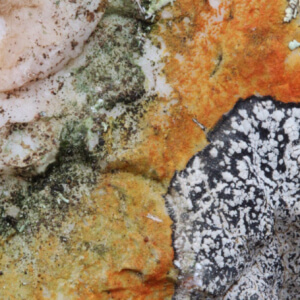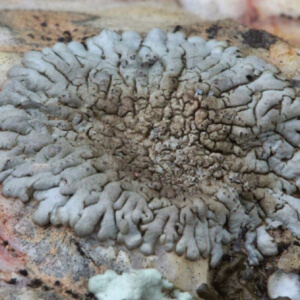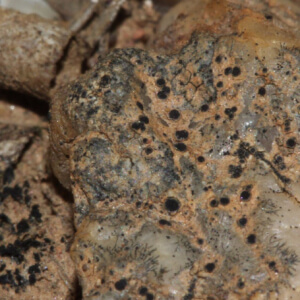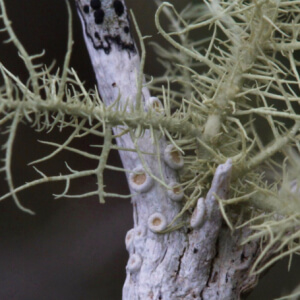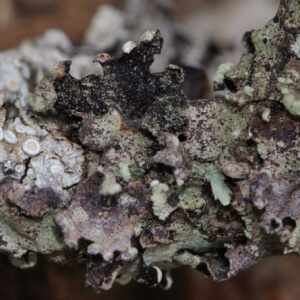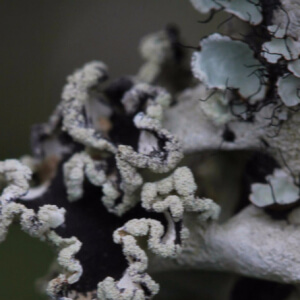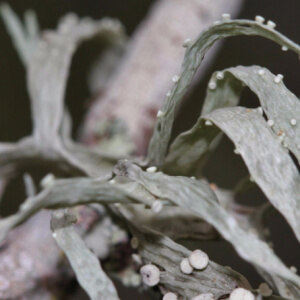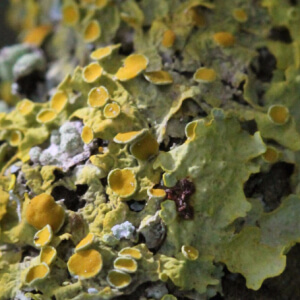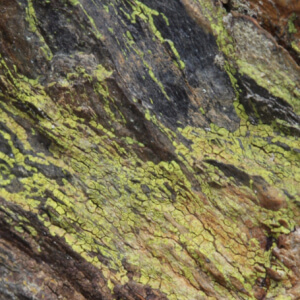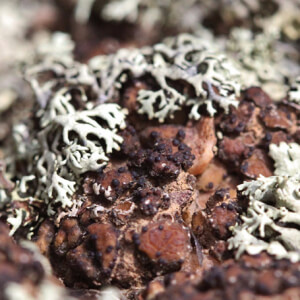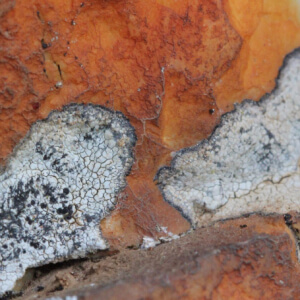Since the launch of the Research and Visitor’s Centre at Haarwegskloof Renosterveld Reserve, we have welcomed a plethora of visitors from both the local area and far beyond. Last month we were lucky enough to receive a visit from lichen expert Professor Volkmar Wirth from Germany. Prof Wirth opened our eyes to the extraordinary diversity of lichen species to be found within the reserve, finding about 30 species in a relatively short space of time.
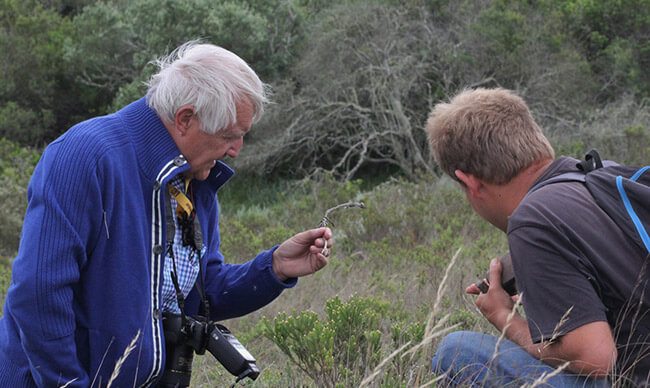
So what is a lichen? What is it that makes them so interesting? To the untrained eye they are often incorrectly thought to be plants. But in fact this is far from correct. Lichens are actually formed from two different organisms living in symbiosis: Either a cyanobacteria or an algae living among the filaments of a fungus. The symbiosis between the two different organisms is so well balanced that lichens are considered to function as relatively self-contained miniature ecosystems. Like plants, lichens also are photosynthetic organisms but there the similarities end.
About 6% of the earth’s surface are covered with lichens and there are around 20,000 known species. They are capable of growing on any surface that is stable and sufficiently well-lit to allow photosynthesis. They grow on rocks, tree bark, branches, on top of other lichens and mosses and also on the soil surface, forming a biological soil crust. Lichens are found on every continent on earth, including Antarctica. They can grow from sea level to high alpine elevations. Some are adapted to grow in the most extreme environments in the world, from the hottest and driest deserts to the coldest tundra. They are well adapted to survive complete desiccation, recovering well after a complete loss of body moisture. Lichens have even been found to be able to survive in outer space, according to the European Space Agency. In 2005 a Russian rocket was launched with several capsules full of lichen on board. Once the rocket was in orbit the capsules were exposed to the space vacuum for 15 days. After this they were then brought back down to earth and found to be in full health.
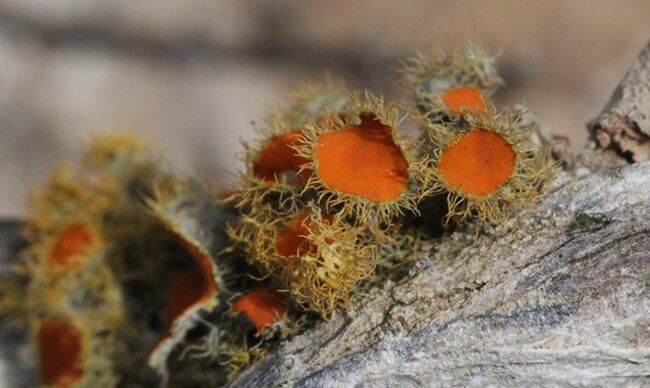
Lichens can be incredibly long-lived, with some species being thought to be some of the oldest living organisms on earth. However, they can be highly sensitive to environmental disturbances such as air pollution. They are often used as a measure to monitor this and other pollutants such as heavy metal contamination. Lichens are also used by people in other ways: Despite the toxicity of many species they are sometimes used as a food source during times of famine and play an important role as an ingredient in traditional medicines.
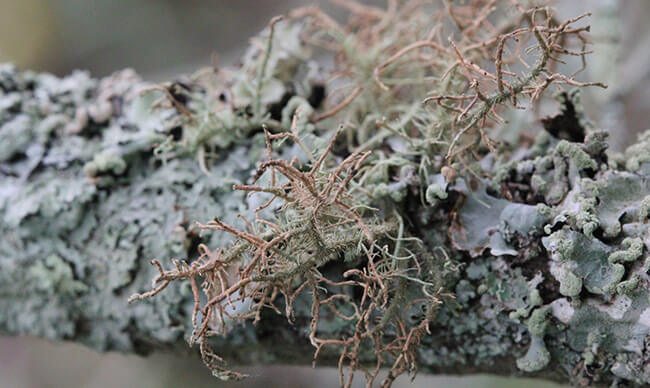
Many lichen species have extraordinary common names: There is the ‘Elf-Ear Lichen’, ‘Black Eye Lichen’, ‘Five o Clock Shadow Lichen’, ‘Hairball Lichen’, ‘Naked Kidney Lichen’, ‘Chocolate Chip Lichen’, ‘Rock Liquorice Lichen’, ‘Tattered Rag Lichen’ and ‘Blackened ‘Toad Skin Lichen’.
Next time you encounter the humble lichen, know that they are one of the wonders of the natural world.
Here we share with you some of the photographs taken on this wonderful day in the field. We have not confirmed identifications for these yet (but these are usually more unpronounceable that most Latin plant names!), so just enjoy their various shapes and colours as your eyes feast on yet diverse group living in our beautiful Renosterveld.

